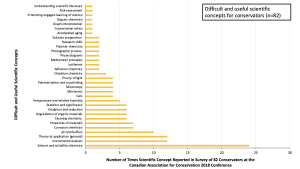Threshold Concepts
Many disciplines have applied the framework of threshold concepts, first brought into prominence by Meyer and Land (2003) to support curriculum renewal, including conservation science (see references below). The five characteristics of threshold concepts are: 1) troublesome or difficult, 2) transformative, where the learner experiences a shift in perspective, 3) integrative, where separate concepts (often identified as learning objectives or competencies) are brought into a unified whole; 4) irreversible, where once the learner grasps the concept, it cannot be ungrasped; and 5) bounded which mean may help to define the boundaries of a particular discipline and are perhaps unique to the discipline (Townsend, Brunetti, and Hofer 2011). We would like submissions to CSEO cover at least the first two characteristics of threshold concepts.
Meyer, J. H. F., & Land, R. 2003. “Threshold concepts and troublesome knowledge: Linkages to ways of thinking and practising within the disciplines.” In Enhancing Teaching-Learning Project. Occasional Report 4. Edinburgh: University of Edinburgh.
Murray, Alison, Amandina Anastassiades, and Rosaleen Hill. 2017. “Science in the art conservation curriculum: Determining threshold concepts and strategies for teaching and learning.” In ICOM-CC 18th Triennial Conference Preprints, Copenhagen, 4–8 September 2017, edited by Janet Bridgland. Paris: International Council of Museums.
Murray, Alison and Kyna Biggs. 2021. “Science in the art conservation curriculum II: Views of conservators.” In ICOM-CC 19th Triennial Conference Preprints, Beijing, 17-21 May, 2021, edited by Janet Bridgland. Paris: International Council of Museums.
Townsend, Lori, Korey Brunetti, and Amy R. Hofer. 2011. “Threshold concepts and information literacy.” Libraries and the Academy, 11 (3): 853-869.



Feedback/Errata